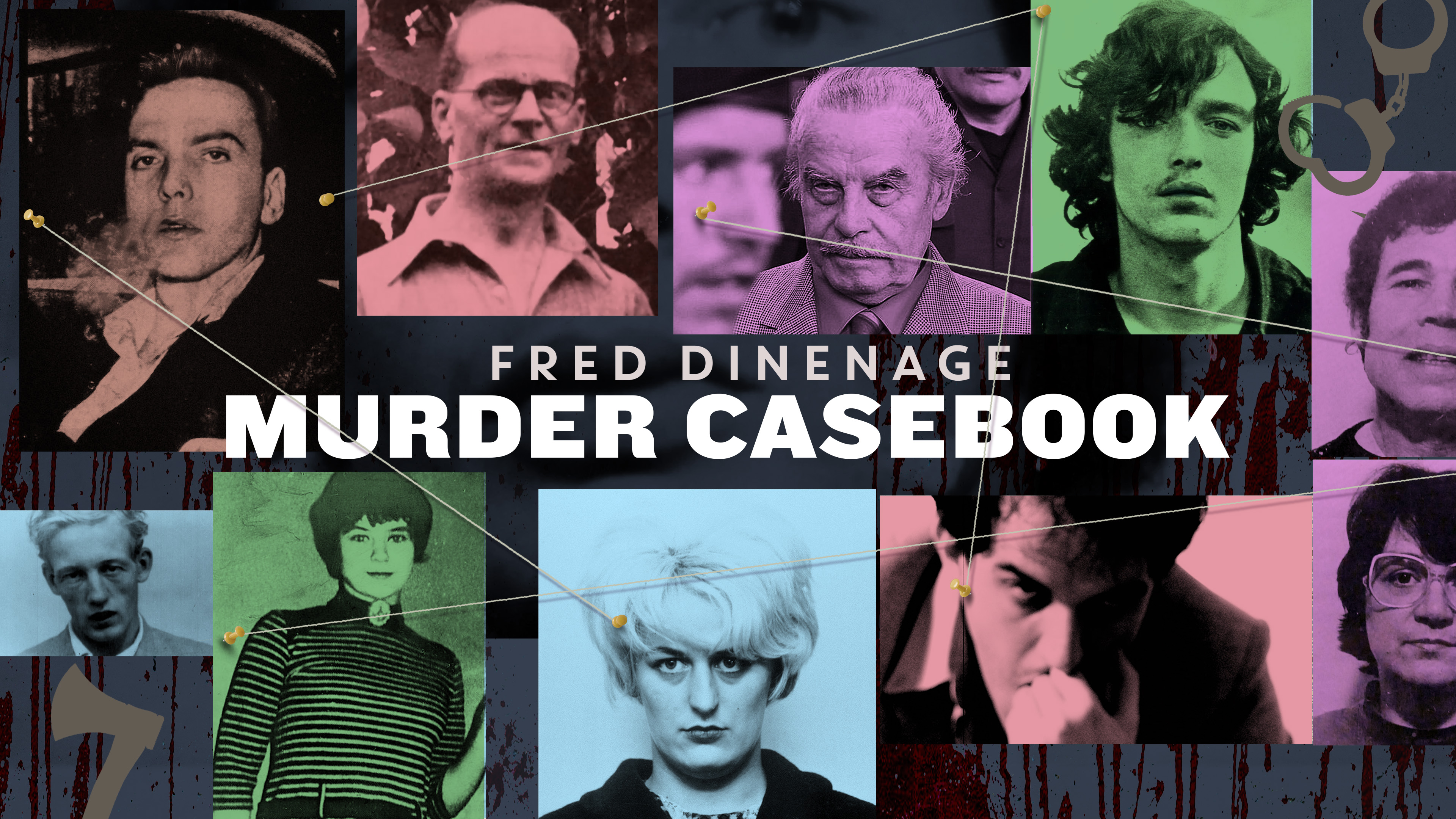These true crime cases have authorities and sleuths scratching their heads.
◊
The human brain might seem hardwired to love a mystery – at least, until that mystery hits unbearably close to home. Certain cases, such as the killing of JonBenét Ramsey or the vanishing of Madeleine McCann, are notorious worldwide. Others, while equally agonizing for family members left behind, are lesser-known. Devoted true crime aficionados across the U.K., however, will likely recognize the following three unsolved cases. Though the victims and their circumstances share few similarities, each case has invited speculation and caused mounting frustration at the lack of resolution.
Out of Place and Time: The Death of Zigmund Adamski
When a particular crime seemingly defies logic, it’s inevitable that otherworldly explanations come into play. One such case is that of Zigmund Adamski, who was a 56-year-old miner and resident of Tingley in West Yorkshire. Adamski disappeared on June 6, 1980, after leaving home on a shopping trip. His wife was concerned when he didn’t return as expected, particularly since the couple had planned to attend a wedding the following day.
 (Source: AI-generated image, via Pixabay)
(Source: AI-generated image, via Pixabay)
Five days later, at 3:45 in the afternoon, Adamski was found on top of a 12-foot-high pile of coal in a yard 20 miles from his home in the Pennine Hills around Todmorden. The body was discovered by Trevor Parker, the son of the owner of the coal yard, which hadn’t been accessed since 11 o’clock that morning.
The condition of Adamski’s body flummoxed authorities, including Alan Godfrey, the officer who first arrived at the scene. Adamski was wearing a suit, but his shirt, watch, and wallet were missing. Despite his disheveled appearance, his skin was perfectly clean, with no coal dust. But there appeared to be burns on Adamski’s neck, shoulders, and head; strangely, they were covered in an ointment that couldn’t be identified by forensic scientists. Godfrey also reported that Adamski’s eyes were flung wide open, his face frozen in fear.
Fred Dineage takes a fresh look at crimes that shocked the U.K. during the 20th century in this riveting MagellanTV series.
Coroner James Turnbull determined that Adamski had died from a heart attack, but he couldn’t explain why he was at the coal yard. No family members or friends had information about his previous whereabouts. Turnbull also observed that Zigmund’s facial hair showed a single day of growth. “The question of where he was before he died and what led to his death just could not be answered,” Turnbull told the BBC.
Additional theories arose, including that Adamski had been abducted by aliens. It wasn’t necessarily so far-fetched, as the area where his body was discovered was alleged to be a hotspot of UFO activity. In fact, Officer Alan Godfrey would later report having a UFO encounter himself, a mile from where Adamski was found. Godfrey claimed that there was a 15-minute gap in his memory and that his life was forever altered following the experience. “I wish I’d never seen the UFO, particularly because of the effects on my children,” Godfrey recounted.
Zigmund’s case largely fizzled out for two decades, but then new details emerged concerning interpersonal conflicts in his life at the time of his death. The Adamskis had been sheltering a family member who had taken out a restraining order on her husband. Could it be that the husband had kidnapped Zigmund, and the burn marks were signs of the torture he endured while being held captive? While intriguing, this theory has yet to be proven.
Though skeptics believe that the sightings in the Pennines are simply lights from planes or other human-made sources, the location of Zigmund’s body – on a towering pile of coal, seemingly dropped from the heavens – continues to fuel speculation. In 2025, journalist Neil Beecham told Yorkshire Live that, “Mr. Adamski’s mysterious disappearance 37 years ago has always troubled me and is a topic of conversation for the tight-knit community of Tingley, even to this day.”
A Bike Ride Turns Tragic: Noah Donohoe
In Belfast on the evening of June 21, 2020, 14-year-old Noah Donohoe hopped on his bike with a backpack containing books and a laptop, with the intention to meet friends in a park. He never arrived at his destination. When Noah failed to return home, his mother, Fiona, reported him missing to the police.
Noah was known to be an intelligent, athletic, and musically talented boy. His relationship with Fiona was untroubled, while his father, an immigrant from Senegal who had relocated to the United States, spoke frequently to Noah. Reportedly, there was also nothing unusual about Noah’s behavior leading up to his disappearance. But as CCTV footage and witness accounts would attest, his behavior after leaving home was anything but typical.
Shortly after setting off that evening, Noah is seen cycling along Royal Avenue, a popular shopping district. As Noah nears the end of the avenue, he’s captured again. This time, oddly, he isn’t wearing his backpack. He then appears to steer off the path. The next time he appears, he is riding naked and without his helmet through a housing development three miles from his park destination. He then dismounts his bike and walks away behind one of the houses.
 (Credit: Markus Spiske, via Pexels)
(Credit: Markus Spiske, via Pexels)
In the hours and days after Noah was reported missing, witnesses came forward, including
a bus driver who had seen him fall off his bike. Although the driver got out of the bus to help him, Noah cycled on. Two additional witnesses told police that they saw him riding nude in the housing development, though they did not see him remove his clothing. Noah’s clothes and cellphone were eventually recovered along his biking route.
On the third day of the search, a pawn shop manager called police to report that a man named Daryl Paul, a local known to authorities for past robbery offenses, had tried to pawn Noah’s laptop. Police found Noah’s backpack and books at Paul’s home and arrested him, but Paul denied any involvement in Noah’s disappearance, saying he simply discovered the backpack near a building on the University of Ulster campus. Paul was later located on CCTV in a distant part of the city around the time of Noah’s disappearance and was cleared.
When area resident Karen Crooks reported finding Noah’s bicycle in her driveway, search parties zeroed in on the area behind her home. The results of that search were devastating: Police found Noah’s body lying 1,000 meters into a narrow storm drain system. The location was a little over half a mile from home, but nowhere near the park he’d planned to visit.
The cause of Noah’s death was determined to be drowning, but police were left with no concrete leads concerning why he was at the housing development or, more importantly, how he drowned.
Why do some notorious crimes go unsolved? Donal MacIntyre examines the question in MagellanTV's revealing series.
Another theory took root. Leading up to his fateful bike ride, Noah had been fascinated by controversial Canadian psychologist Jordan Peterson, who had created a series of podcasts called “The Biblical Series,” which discussed applying the lessons of the Book of Genesis to modern life. The day of his death, he sent a message to an Instagram fan page for Peterson. (That message has not been recovered.) Noah’s Internet history also showed searches for Biblical terms and about ways to ward off Satan. Could Noah have been planning to meet with someone else he’d been corresponding with online, perhaps a fellow Peterson fan?
Superintendent Muir Clark of the Police Service of Northern Ireland called Noah’s case, “one of the most unusual missing persons enquiries that I have dealt with.” Nevertheless, Clark denied that there was foul play, maintaining that Noah’s death likely resulted from a concussion from falling off his bike, which led to disorientation. Another theory is that Noah died by suicide due to depression, possibly stemming from questioning aspects of his sexuality, and the negative messaging he was encountering online.
For many, including Noah’s mother, Fiona, suggestions that Noah put himself in that drain system – whether to explore or to end his own life – are patently ridiculous. Instead, some have theorized that Noah, who was mixed-race and Catholic (in a community that was largely White, Loyalist, and Protestant), was the victim of a hate crime. Suggestions of a police cover-up have also been raised.
The case of the boy who set out on a bike ride, only to be discovered in a storm drain, is among the saddest in U.K. history. But, unlike many unsolved deaths, this case has the benefit of recency, and the strong potential for new clues to emerge.
The Mysterious 'Mr. Kipper' and the Case of Suzy Lamplugh
Few experiences can match the trauma of learning that a missing loved one’s body has been located. But what about never finding a body at all? The case of London-based victim Suzy Lamplugh is one of the most oft-Googled in the U.K. The public’s enduring investment in her case stems in part from the uncertainty of Lamplugh’s whereabouts. It also vexes the public because the case has come tantalizingly close to being solved – only for answers to again and again slip from reach.
In July of 1986, the 25-year-old real estate agent set out to show a property in Fulham, London. She never returned to her office. When Lamplugh’s coworkers reported her missing, police visited her flat, finding nothing to indicate that anything suspicious had taken place. Lamplugh had shared that she was going to meet a “Mr. Kipper,” though there were subsequently no records found for this individual.
Authorities soon learned that the company car Lamplugh drove had been found unlocked and haphazardly parked. The positioning of the seat suggested that someone taller than Lamplugh had been driving.
 Suzy Lamplugh was showing a man a property at 37 Shorrolds Road before she disappeared on July 28, 1986. (Source: Oasthouse Archive, via Wikimedia Commons)
Suzy Lamplugh was showing a man a property at 37 Shorrolds Road before she disappeared on July 28, 1986. (Source: Oasthouse Archive, via Wikimedia Commons)
A flurry of witnesses came forward. Before she went missing, Lamplugh had left personal items behind at a pub and planned to pick them up the evening of her disappearance. The owner reported receiving a phone call from someone named “Sarah,” asking him to have Lamplugh call her. Shortly after, he claimed he received a call from a police officer also asking for Lamplugh, but this was prior to the start of the investigation.
Some reported seeing Lamplugh arguing with a man in a dark BMW; others said they spotted Lamplugh with a man who was holding a bottle of champagne. Roses had also been delivered to the office by an unknown man days prior to her disappearance.
Despite the number of leads, no arrests were made.
Six months into the investigation, a tip came in about an abandoned BMW that was registered to a man who would sometimes go by a similar name, “Mr. Kiper.” However, he had been in Belgium at the time and was cleared.
Shortly after, a police sketch based on witness accounts led to another compelling suspect. The image strongly resembled Birmingham-born John Canaan, who had been previously convicted for beating his girlfriend and raping another woman. He was on work release at the time of Lamplugh’s murder, but had more recently been arrested and convicted for murdering 29-year-old Shirley Banks. He also had attempted to abduct other women leading up to Banks’s murder; had showed up unexpectedly at a house viewing, only to leave once he saw a man was present with the female agent; drove a dark BMW; and his nickname in prison had been “Kipper.”
Case closed, right? Astonishingly, police insisted there still wasn’t enough evidence to charge Canaan. At least Canaan was already in a place where he couldn’t hurt anyone else. Or could he?
A Murder from Behind Bars?
On June 9, 1996, three years after Suzy Lamplugh was officially declared dead, 25-year-old Melanie Hall vanished after a night out at the Cadillacs nightclub in Bath. Several years later, Hall’s skull, thigh bone, and pelvis were found in a garbage bag near Thornbury, South Gloucestershire. While there were a number of potential suspects in Hall’s murder, inmates incarcerated with Cannan at the time of Hall’s death reported that Cannan spent extensive time plotting an additional abduction from his cell. Might Cannan have convinced a newly released inmate to commit murder on his behalf?
Police haven’t ruled out Cannan as Hall’s killer, though a number of other men are also suspects. In regards to Lamplugh, while Cannan might be the most obvious perpetrator, without a body police couldn’t quite clinch the case.
In November of 2024, John Cannan died from an aneurysm in prison, having never admitted to killing Lamplugh. In a statement to the BBC, Lamplugh’s 64-year-old brother Richard said that, “I’m not mourning John Cannan,” but instead, “the loss of him ever giving us closure.”
Some cases might seem destined to remain shrouded in secrecy – or to be the domain of the mystical and unseen. But, as Oscar Wilde once said, “the true mystery of the world is the visible, not the invisible.” So long as there are invested parties, paired with newly emerging investigative tools, no case is ever fully laid to rest.
Ω
Matia Query is a freelance writer and the editor of BookLife, the indie author wing of Publishers Weekly. She lives in New York’s Hudson Valley.
Title Image source: Adobe Stock



